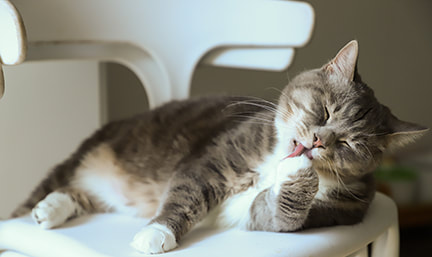 Photo by cottonbro from Pexels
Photo by cottonbro from Pexels Like a prenuptial agreement, the aptly named “pet-nuptial” (pet custody) agreement can assist you in keeping your cherished feline companion should your current relationship end.
Whether you’re divorcing a spouse, breaking up with a partner or moving out on a roommate, if you’ve owned a cat together, gird yourself for a potential battle over the custody of that cat. The key to resolving this issue and being on the winning end of it is to have a “pet-nuptial” agreement already in place.
Since the law in most states regards pets not as family members but as personal property, protecting your rights requires foresight on your part. When you have a “pet-nuptial” agreement, a court – if it comes to that – will, in all likelihood, enforce it unless you live in one of a handful of states with pet custody laws. If so, the judge will, as in any child custody battle, make a decision based on the best interests of the disputed pet.
Without a pre-arranged agreement, you’ll have to prove why YOU’RE the one entitled to keep the cat rather than your spouse, partner or roommate. Are you able, then, to provide the answers to the following questions?
• Who actually adopted or purchased the cat in question? Have the necessary receipts, wherever possible.
• Did you or “the other party” have the cat before the start of your “arrangement?”
• Are there any children involved who are attached to this cat? If so, where will they be living?
• Who plays the greater role in feeding and playing with the cat?
• Who takes the cat to the veterinarian?
• Who pays the bills -- from food, toys, beds and other kitty essentials to veterinary expenses, medications, supplements and therapies if applicable?
• Does either party have a work schedule that prevents them from spending quality time with the cat?
• Which party has bonded with the cat, is the one she always follows around, always sleeps near, etc.?
• Has either party ever exhibited any cruelty towards your cat or any other animal?
To keep your pet dispute from ever going to court, consider using mediation or arbitration instead. This way you can hopefully work together and come to an amicable arrangement.
Another solution is an agreement that either provides for joint custody of your cat or for sole custody with the other party given “visitation rights.” Joint custody agreements are far from ideal since pets, like children, are often traumatized by the dissolution of a marriage or partnership. A custody agreement where your cat is shuttled back and forth between two homes seldom works satisfyingly for any party – particularly the cat.
If your spouse already had the cat before you got marred, it will be difficult for you to get custody of her because she’s not considered “marital property” but your spouse’s “separate property.”
And yet, in some cases, you may emerge victorious. Examples: if you spend the most time with your cat, you could get custody of her despite the fact that your spouse pays most of the vet bills. If children are involved, and you’re getting custody of them in one of the few states with pet custody laws, a judge will want the cat to remain with the children. In other states, custody could be split, with the children going to one parent and the cat going to the other.
Because pet custody is an evolving legal issue, consider hiring a family attorney to help you. Ensure that you have photos and videos of you and your cat sharing a series of bonding experiences. Ensure that you have witnesses eager to testify that YOU are her primary guardian and playmate. Ensure that you have records of or receipts for every purchase you’ve made towards her care and well being.
In short, if you have a cat and an intact marriage or partnership, put a “pet-nuptial” agreement in place NOW so that you’re protected should the relationship ever end.










 RSS Feed
RSS Feed